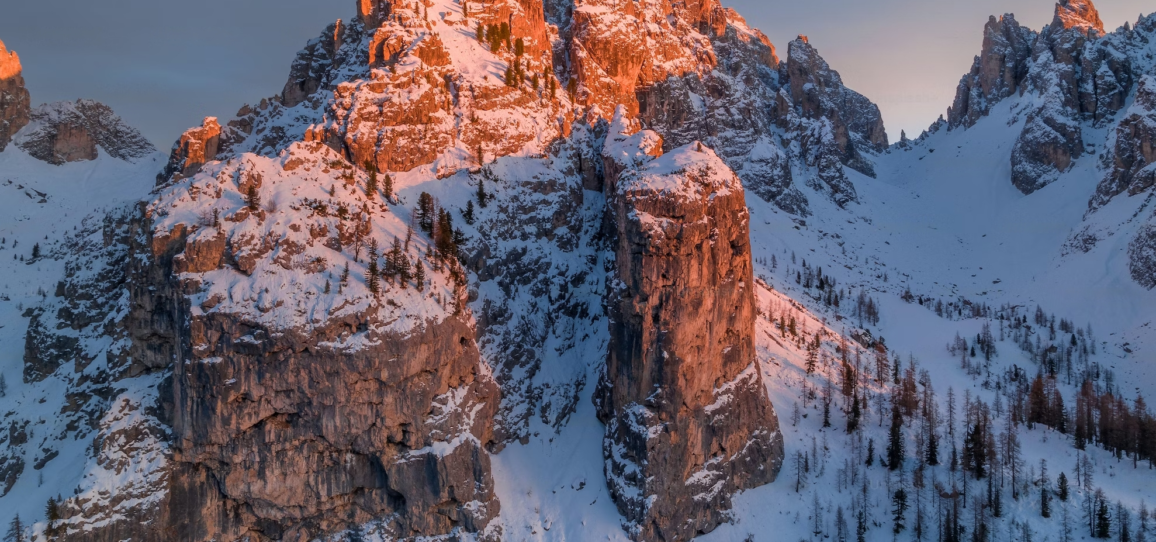
The Names of Mount Hermon
In his final soliloquy, Moses recounts the events since the exodus from Egypt. He describes the defeat of the two Emorite kings “from Arnon Brook to Mount Hermon.” The Torah then adds some information about Mount Hermon: “Sidonians would refer to Mount Hermon as Sirion, and the Amorites [or Emorites] would call it Senir.” Rashi explains that the word Senir means “snow” in both German and Canaanite languages.
Why does the Torah go out of its way to tell us about Mount Hermon’s other names? Further, what message was Rashi trying to convey by translating Senir as “snow?”
Strategic Mountain
One explanation is that the Sidonians were merchants known for their wisdom, as the prophet Zecharia (9:2) states: “Tyre and Sidon, for she is very wise.” The Sidonians knew the strategic value of having a snow-covered mountain on their border. Therefore, they referred to this mountain as Sirion, which means “shield” or “armor.”
The Emorites, by contrast, were considered simple and uncouth, and unable to grasp the strategic importance of the mountain. Thus, they referred to it simply as “snow,” as though it held no other value. As we shall see, this dismissive description of the Emorites does not do them justice!
Right and Left
A deeper explanation for the Torah’s mentioning Mount Hermon’s other names can be found in the Chassidic work, Ohev Yisroel:
The name “Sidon” is related to the Hebrew word “tzad,” which means “on the side.” This is understood to refer to the wicked, who deviate from the straightforward path of holiness advocated by Maimonides. On the other hand, the word “Emori” is related to the Biblical word “he’amarta,” which connotes “words of praise,” and is understood to refer to the righteous, whose lips are always praising G-d.
The name “Chermon” (Hermon) is related to the word “cherem,” which means “destruction.” This is an allusion to the Yetzer Hara (evil inclination) that tries to destroy us spiritually. Additionally, the word “Chermon” is related to the word for a trap, just as the evil inclination attempts to ensnare us.
Hence, the Sidonians, representing the wicked who stray from the path, call the mountain by the name Sirion, which is an acronym for the words “s’mol rom viyimin nofel,” meaning “the left is exalted and the right falters.” In Kabbalistic writings, the left refers to the forces of evil, and the right to the forces of holiness.
The Emorites, representing the righteous who praise G-d, called the mountain Senir, which is a reverse acronym for the words “s’mol nofel yimin rom,” meaning “the left falters, and the right is exalted.”
The Ohev Yisroel, however, does not explain the connection of the Sidonians and Emorites to the actual meanings of the names Senir and Sirion.
The Chassidic work, Tzemach Tzadik, fills that gap and explains that the word “Sidon” is related to another Hebrew word, “tzad,” which means to capture or ensnare. The Sidonians are seen as people who seek to entrap others in the service of their evil inclinations.
The Tzemach Tzadik, however, does not explain the relationship of the name Senir, which means “snow,” to the Emorites who are identified as the righteous. What do righteous people have in common with snow?
The answer to this question can be found in this week’s Haftarah (prophetic reading) from the Book of Isaiah, in which snow is associated with purity: “If your sins will be like scarlet, they will whiten like snow…” According to the Zohar, snow is also a metaphor for Yom Kippur, the Day of Atonement, when all our sins are forgiven. The Alter Rebbe explains in his work Likkutei Torah that the reference to crimson turning to snow alludes to the crimson rope that miraculously turns white on Yom Kippur after the scapegoat has been cast down the mountain. This signified the forgiveness of the sins of the Jewish people. The Alter Rebbe connects this to the verse in the Biblical book of Daniel that describes G-d as the “one that was ancient of days” whose “raiment was as white as snow.” This anthropomorphic description of G-d is a metaphor alluding to G-d’s 13 attributes of mercy, which override His system of justice and generate atonement.
Thus, we now can understand the connection between the symbolic interpretation of the Emorites as those who praise G-d with the purifying concept of snow. Their praises enable them to access the purifying power of “snow.”
Two Forms of Emorites
One may raise the question: If the Emorites are identified as the righteous who incessantly praise G-d, why would they need to seek atonement? Aren’t they in the category of tzadikim (righteous individuals) who are devoid of real sin?
The answer is that there are two types of Emorites; one is positive and the other is negative. The negative Emorite is one who speaks constantly in ways that are contrary to the Torah, including gossip, slander, idle talk and vulgar language. These negative Emorites refer to the Mount Hermon as “snow” because they, too, can be rehabilitated and seek atonement. Moreover, they can convert their past transgressions into pure white snow through Teshuvah (repentance), particularly on Yom Kippur.
Even the positive Emorites, those righteous ones whose speech is positive and holy, can also engage in Teshuvah. As we are taught in the Zohar, Moshiach will lead the righteous to do Teshuvah because Teshuvah is not only for those who sin but also for those who are sinless. Teshuvah elevates that person through an unprecedented level of spiritual growth to the point where he or she can reach the Divine power associated with, and symbolized by, the pure whiteness of snow.


